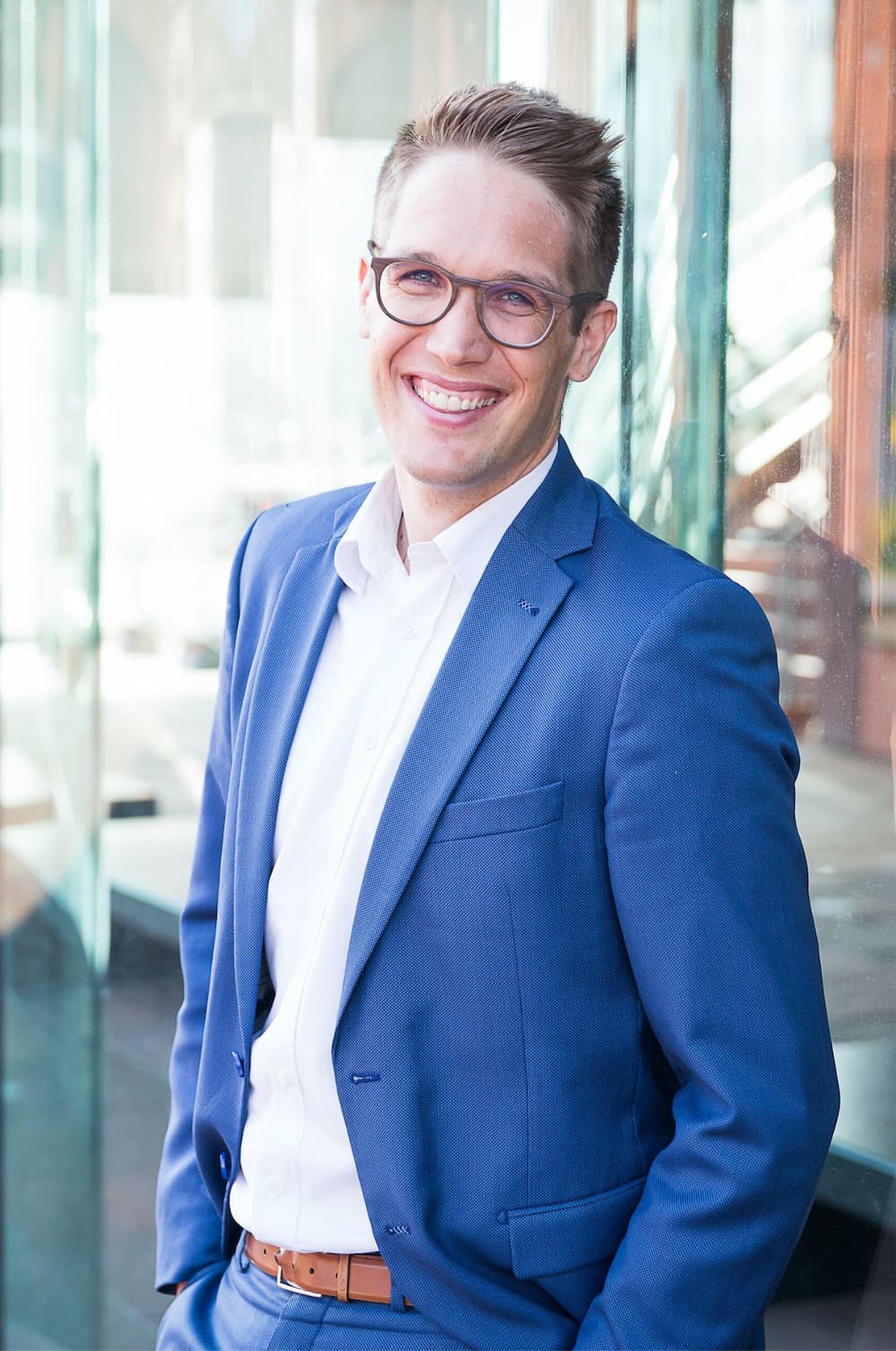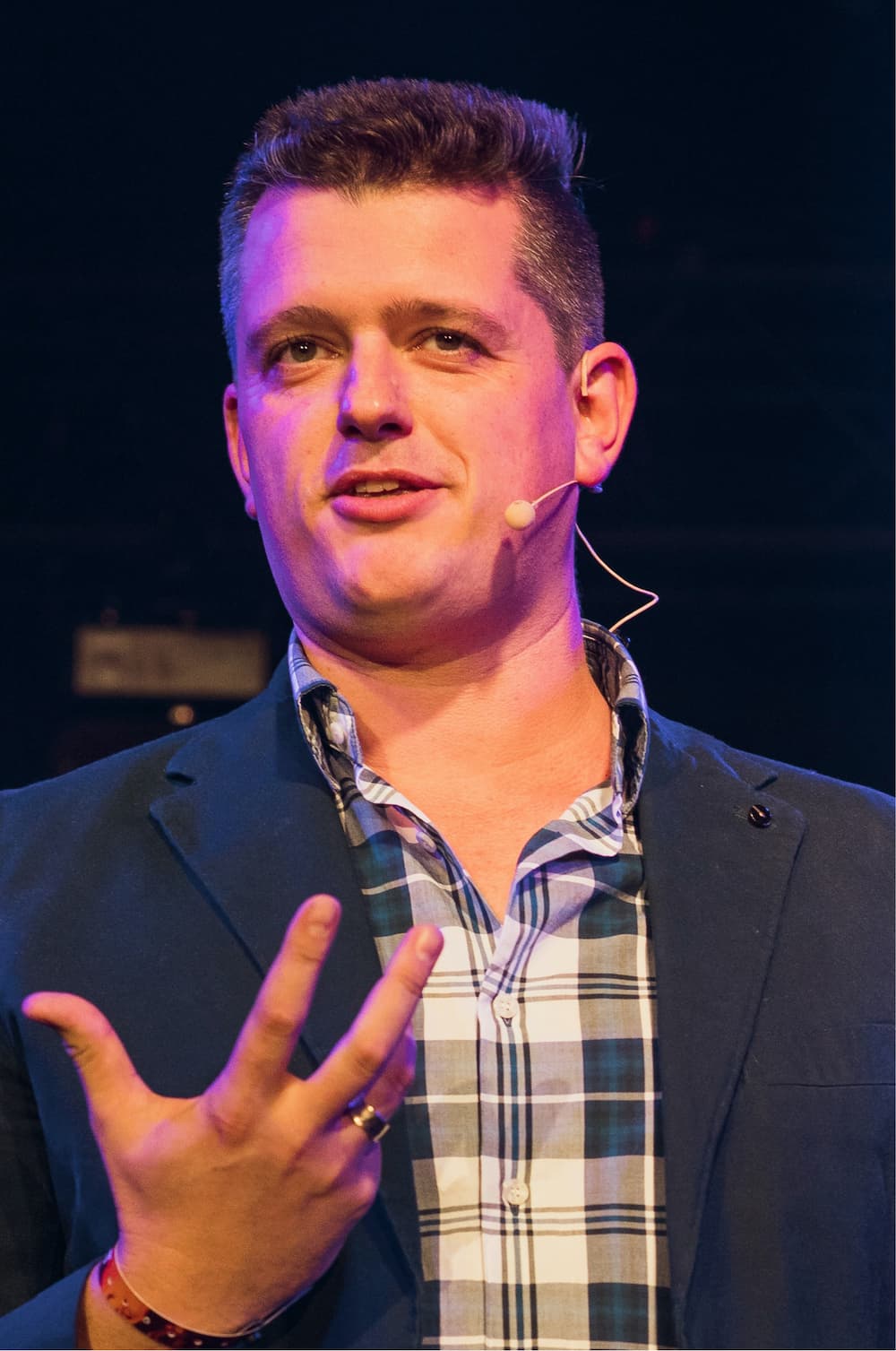Having standardised products and processes across all countries is an important aspect in ensuring that our customers experience us and our services as ‘One SD Worx’. This applies no matter which country they are in, team they work with or tool they use to get in touch with us. Customers are central to our activities and drive every step we take in our transformation programme.
“High customer satisfaction is driven by a smart combination of a high-performance digital offering on the one hand and the human touch – our ‘spark’ – on the other.”
Tom Saeys,
Chief Operations & Shared Services Officer at SD Worx

Tom Saeys: “We are convinced that high customer satisfaction is driven by a smart combination of a high-performance digital offering on the one hand and the human touch – our ‘spark’ – on the other. But if we want to remain at the head of the pack, we must also continuously invest in digitalisation.”
One direction
and goal
“The Transformation Office was set up two years ago to ensure that our transformation projects are all heading in the same direction.”
Tom Saeys,
Chief Operations & Shared Services Officer at SD Worx
Long story short: there are many different transformation projects in progress at SD Worx. Tom Saeys: “The Transformation Office was set up two years ago to ensure that these projects don’t head in all directions like speedboats. Our task is to streamline and coordinate them, and we do so for and together with our colleagues from the business with the customer as our compass.”
After all, there are various aspects of transformation. Tom Saeys: “Behind the scenes, we are engaged in design, development, implementation and finally, rollout. But at the same time, we have to ensure that our daily business keeps running. And last but not least: all involved teams need to be involved in the transformation. They’re the ones who must adopt a new way of working, and it’s important for them to fundamentally understand the how and the why.”
The people side
of change
For the Transformation Office, there is also an important role reserved for the human side of transformation. Half of the team consists of change management professionals. These colleagues make sure that the transformation is embedded in the DNA of the organisation, in our many teams, and in the ways of working of each individual employee.
Even in the more tooling-oriented programmes, we invest heavily in making sure we accompany any new tooling with solid and standardised processes. Doing so enables the company to work in a more uniform way while staying mindful of differences between teams and geographies.
And last but not least: the important role of customers themselves. Tom Saeys: “We transform for our customers, but we must also do this together with them. Implementing a change unilaterally and forcing it on the customer doesn’t lead to sustainable transformation. Our Net Promoter Score survey is an important indicator in this regard. But we go further than that by actively asking for customer feedback via customer boards.”

“We transform for our customers, but we must also do this together with them.”
Tom Saeys,
Chief Operations & Shared Services Officer at SD Worx
Digital
backbone,
human touch

“In a society undergoing rapid change, organisational transformation is the order of the day – and it is expected to remain so for the next several years.”
Tom Saeys,
Chief Operations & Shared Services Officer at SD Worx
In a society undergoing rapid change, organisational transformation is the order of the day – and this isn’t likely to change for a number of years. This fact was brought into sharp focus during COVID. 2020 was an uncertain year for many of our clients. With a tsunami of new legislation and regulations rolled out in weeks or even days, the number of consulting requests submitted to our teams skyrocketed.
Tom Saeys: “One of the larger transformations we are working on is implementing a new service management system to make sure we handle customer requests in a uniform way. This program, although it involves new tooling, is actually very much focussed on the human side of transformation. Enabling all our front-line employees to fully embrace not only the tooling but also the accompanying new processes requires the Transformation Office to focus heavily on user training, overall adoption and support.”
The foundations
of our SME
organisation
are in place
“We’ve been working on the foundations of our SME organisation for several years; everything is now in place to grow together with colleagues and customers.”
Robin Beens,
Director of SME
at SD Worx

SD Worx started providing services specifically for SME customers almost two decades ago. In addition to reliability and expertise, its main selling point was proximity. Our SME offering even bore the name Proxy.
A feeling of proximity
Director SME Robin Beens: “Our challenge was to understand the customer’s needs as thoroughly as possible and respond to them with flexible service. Proxy has always been a success story and its approach is very human. But human proximity becomes a serious challenge from the moment you want to grow and scale.”
In order to provide the best-possible service to all customers, SD Worx has opted for a smart mix of digital and human. We believe that this combination can be used within the SME segment to continue to guarantee that feeling of proximity.
Robin Beens: “The transformation program supports our SME organisation to achieve this ambition. Over the past two years, we have been working on both our organisational processes and our offering. The objective has been to create an approach and an offering that are uniform and recognisable across all teams.”
The transformation track continues

Change processes follow a fixed pattern. First of all, a test is performed within one specific team. After a thorough evaluation, the change is rolled out more broadly. Robin Beens: “This enables us to scale up quickly on the one hand, and to continue to make adjustments based on sharing best practices on the other hand. And everyone within the SME organisation will eventually reap the benefits of this approach.”
Of course, in such profound transformation processes, keeping the balance between internal and external communication is crucial. Robin Beens: “We absolutely want to avoid roadblocks in the partnership relationship with our customers.”
“Today, we’ve come a long way, but we haven’t yet reached the end of the transformation track”, Robin Beens concludes. “I compare it to building a house: we’ve been working on the foundations of our SME organisation for several years and everything is now in place to grow together with colleagues and customers. In the meantime, we continue to work on continuous improvement.”





